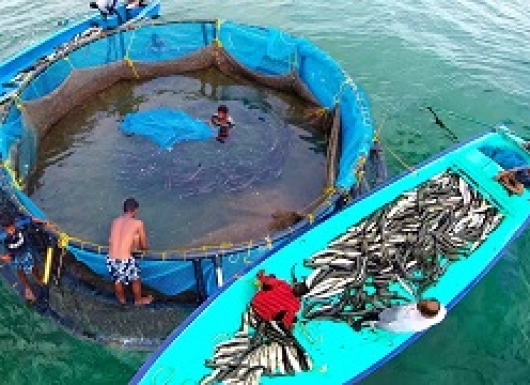Submitter: ICAR
The technology of cage culture in open-waters can support the dwellers around the open-water bodies in African and Caribbean countries possessing vast natural water resources.

The Indian fisheries sector has recorded consistent growth in production, with an annual growth rate of over 7% during the last four decades, reaching a new high of around 18.5 million tonnes in 2024. The technological breakthrough involving diversified aquaculture practices through pen and cage culture in open-waters have contributed immensely to this surge.
Cage culture in lakes and reservoirs with carps, catfish species and tilapia can be undertaken in the several African and Caribbean countries where suitable inland open-water resources are available.
Presently, the technology has been adopted in the inland lakes and reservoirs of the country, and currently around 20,000 cages (6 m x 4 m x 4 m per cage) has been installed in various states with a production of about 70,000 tonnes. This technology is vital for community development and offers food and livelihood support to the economically weaker sections of the society.
Cage culture can be established in any suitable inland open-waters including lake and reservoirs, with proper water conditions, quality seed, and effective feeding strategies for exploiting the under-used water resources to produce fish.
Small enclosure of pens and cages eases operations with respect to seed stocking, feeding, growth and health monitoring and harvesting. Being a low-cost technology, where the inputs are readily available, horizontal and vertical expansion in production can be easily obtained through intensification.
Dr. J.K. Jena Deputy Director General (Fisheries Science Division) ICAR
Phone: 0091-1125846738
Email: ddgfs.icar@gov.in